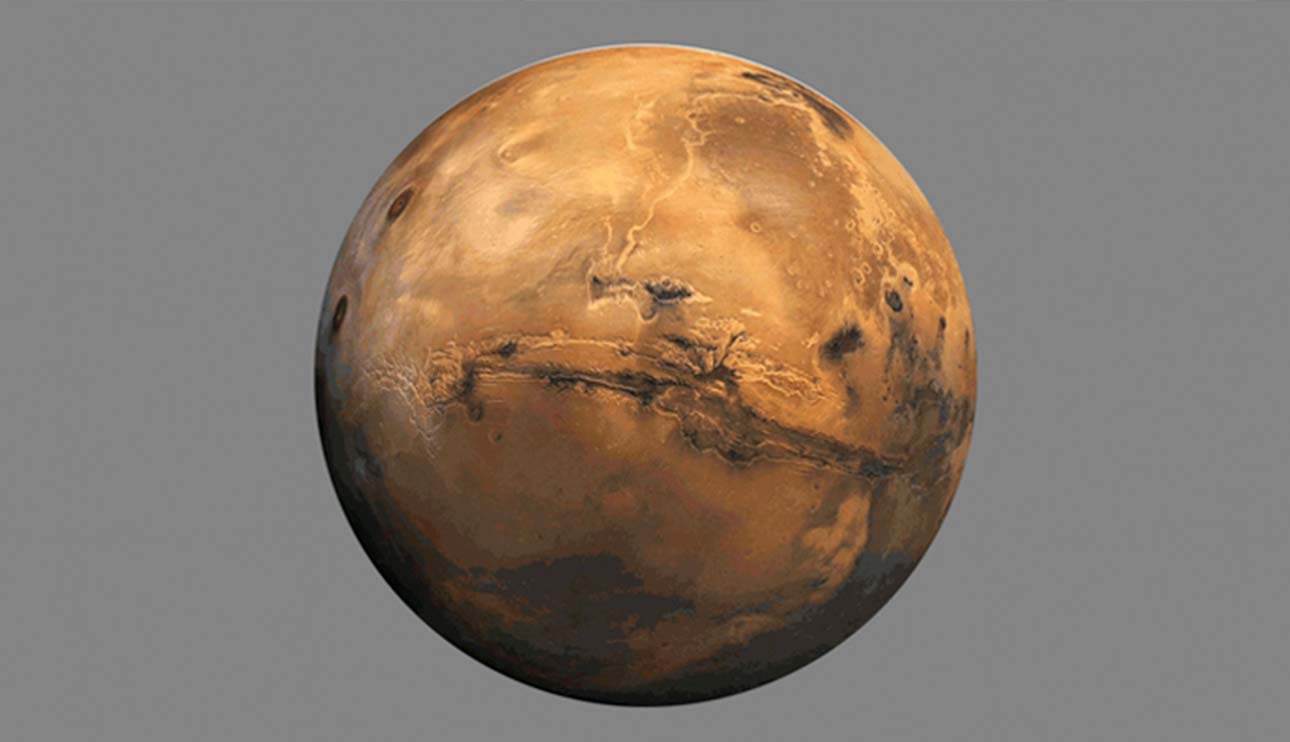23 de June de 2023
An international research reveals unprecedented free oscillations on Mars triggered by atmospheric phenomena and the planet’s largest recorded quake detected by NASA’s InSight. This discovery, published in the Geophysical Research Letters journal, will provide valuable insights into the internal dynamics and composition of the Red Planet.
Martin Schimmel, researcher from Geosciences Barcelona at CSIC, is one of the lead authors of the study, alongside researchers from the Institut de Physique du Globe de Paris (IPGP-CNRS), ), Philippe Lognonné and Eleonore Stutzmann. “Free oscillations are a fundamental measure for determining the average structure, especially at great depths. These measurements will allow us to determine the physical properties of the major layers and construct comprehensive models encompassing the entire planet,” points out Schimmel.
In this study, the research team detected 60 normal mode frequencies, thanks to the magnitude 4.7 marsquake that occurred in late December 2022, and the low long-period noise of NASA’s InSight seismometer, which recorded the vibrations.
The Martian hum
The research also presents evidence of continuous vibrations on Mars, known as the “Martian hum,” as several of the intrinsic frequencies were present before the marsquake occurred. With these results, the Red Planet becomes the second terrestrial planet, after Earth, where these vibrations are observed.
Using a technique called phasor walkout analysis, the scientific team successfully identified hidden vibration patterns in Mars’ seismic records. “The signals were very weak and couldn’t be detected using conventional methods,” says the GEO3BCN-CSIC researcher. For this reason, the research team employed also older methodologies, some of which were developed over 20 years ago: “the key technique in this study dates back to before the computer age.”
In fact, Schimmel previously utilized the phasor walkout analysis in a biomedical study published in 2002, which demonstrated circadian rhythms – the physical, mental, and behavioural changes that follow a 24-hour cycle – using temperature measurements of premature babies.
By capturing the free oscillations on the planet, this research opens the door to further deepen the understanding of Martian seismology and gain more insights into its internal structure.
All this information adds to what has already been published by the InSight project team in recent years. The most recent publication, in which Schimmel also collaborated, shows the first-ever detection of seismic waves travelling through the Red Planet’s core. Based on the results, the research team concluded that Mars’ interior contains significant amounts of sulfur, in addition to iron, as well as smaller quantities of oxygen, carbon, and hydrogen.
Referencia científica
P. Lognonné, M. Schimmel, E. Stutzmann, P. Davis, M. Drilleau, G. Sainton, T. Kawamura, M. P. Panning, W. B. Banerdt. Detection of Mars Normal Modes From S1222a Event and Seismic Hum. Geophysical Research Letters. DOI: 10.1029/2023GL103205

